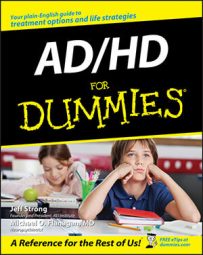AD/HD looks different in almost everyone. You may have problems regulating yourself if you’re dealing with AD/HD. This can happen in areas of attention, behavior, and motor movements. The term attention deficit/hyperactivity disorder (AD/HD) comes from the American Psychiatric Association’s Diagnostic and Statistical Manual of Mental Disorders (DSM-IV) and the DSM-IV outlines three basic types of AD/HD:
Predominantly inattentive type. Having this type of AD/HD means that you have difficulty focusing but are able to sit still. Classic symptoms include:
Making careless mistakes
Not seeming to listen as someone else speaks
Being disorganized or forgetting things
Having trouble focusing on a specific task
Predominantly hyperactive/impulsive type. If you have this type of AD/HD, maintaining attention is less of a problem than being able to control your body movements or behaviors. The basic symptoms include:
Speaking or acting out of turn
Not considering consequences before acting
Fidgeting or feeling restless when trying to sit
`Being excessively physically or verbally active
Combined type. If you have a number of symptoms from both the inattentive and hyperactive/impulsive lists, you may have the combined type of AD/HD.
To have AD/HD, your symptoms must meet certain guidelines, including:
Existing for at least six months
Appearing before you were 7 years old
Having a significant impact on your life in more than one setting
Not being attributable to a different condition (such as bipolar disorder)

